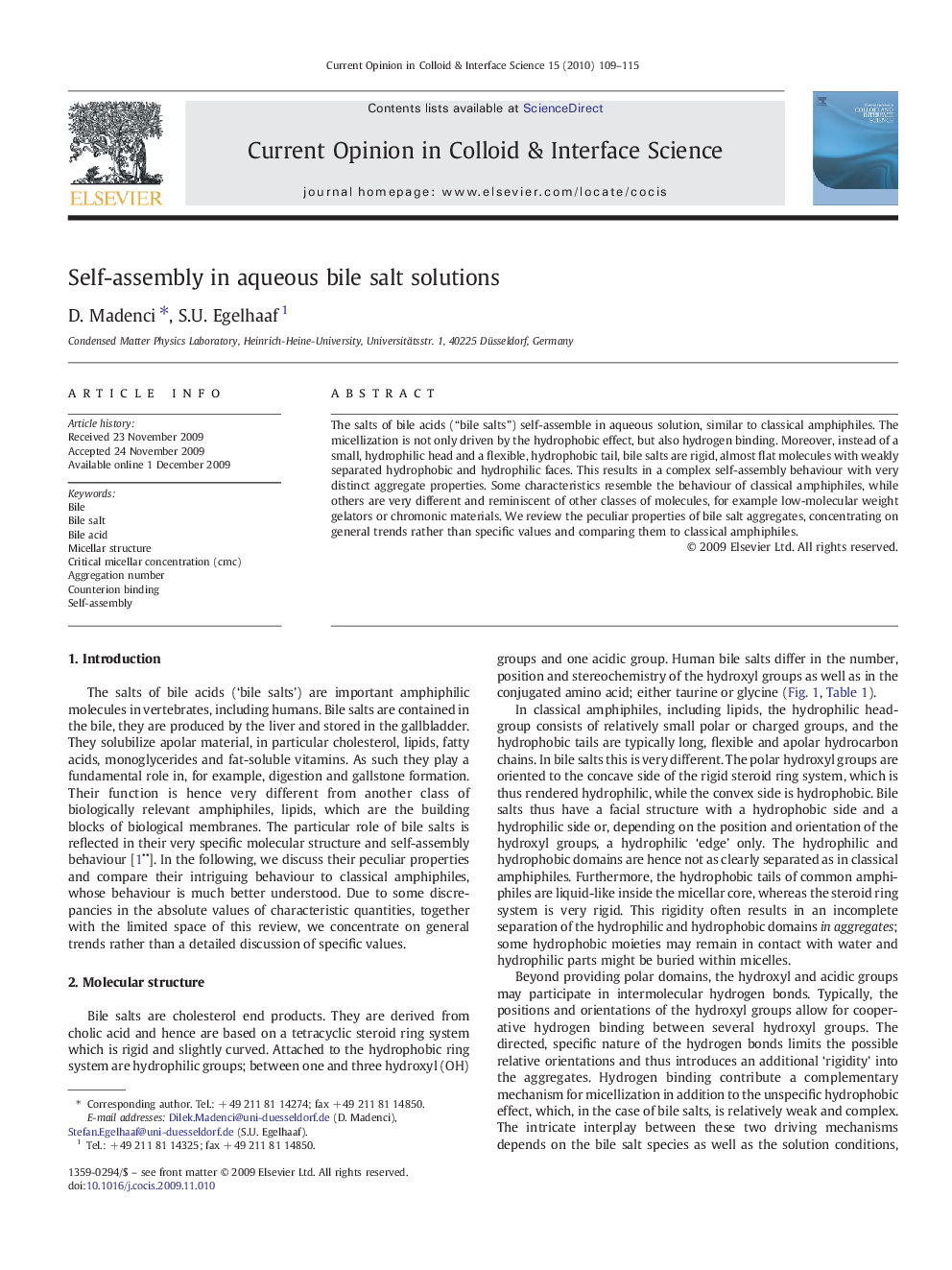| Article ID | Journal | Published Year | Pages | File Type |
|---|---|---|---|---|
| 603644 | Current Opinion in Colloid & Interface Science | 2010 | 7 Pages |
The salts of bile acids (“bile salts”) self-assemble in aqueous solution, similar to classical amphiphiles. The micellization is not only driven by the hydrophobic effect, but also hydrogen binding. Moreover, instead of a small, hydrophilic head and a flexible, hydrophobic tail, bile salts are rigid, almost flat molecules with weakly separated hydrophobic and hydrophilic faces. This results in a complex self-assembly behaviour with very distinct aggregate properties. Some characteristics resemble the behaviour of classical amphiphiles, while others are very different and reminiscent of other classes of molecules, for example low-molecular weight gelators or chromonic materials. We review the peculiar properties of bile salt aggregates, concentrating on general trends rather than specific values and comparing them to classical amphiphiles.
